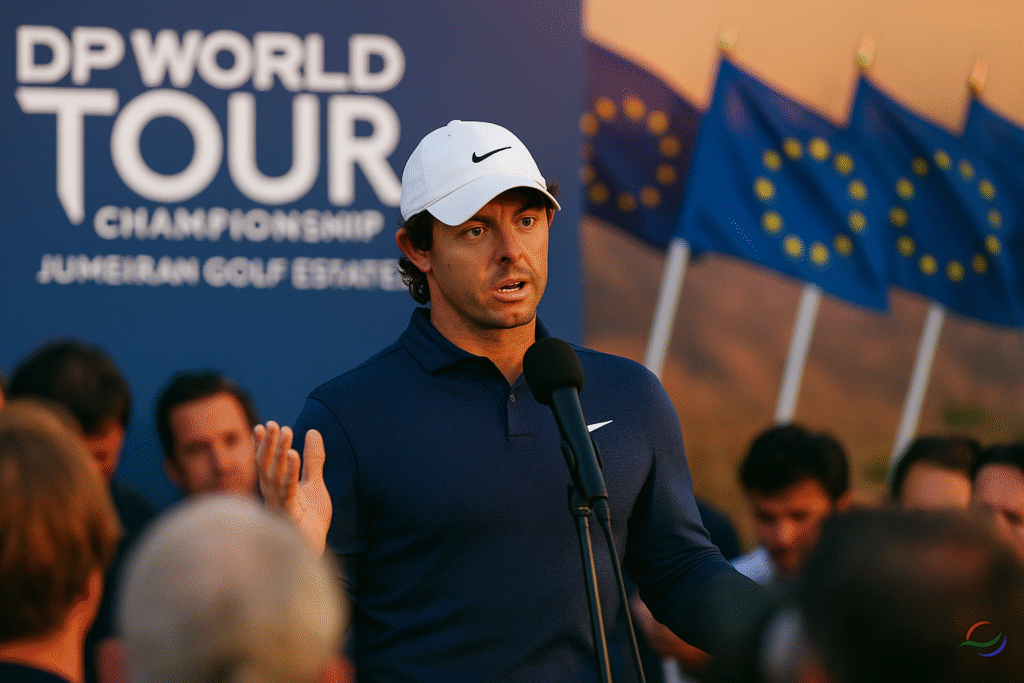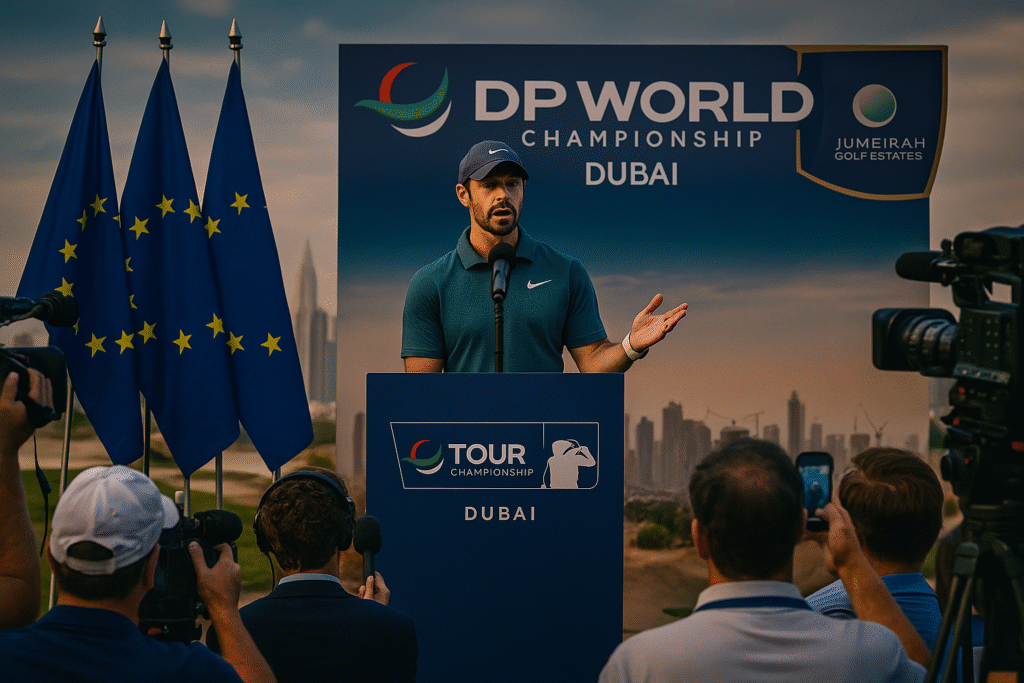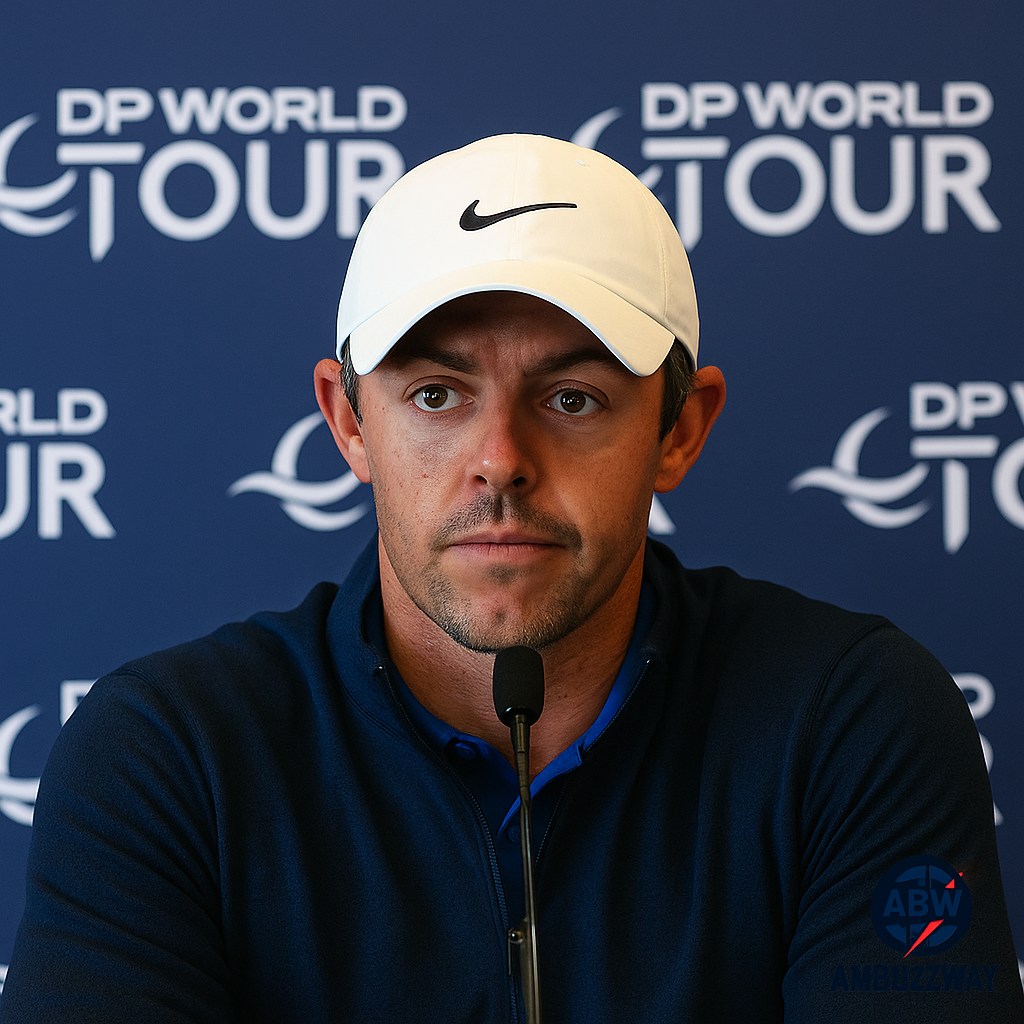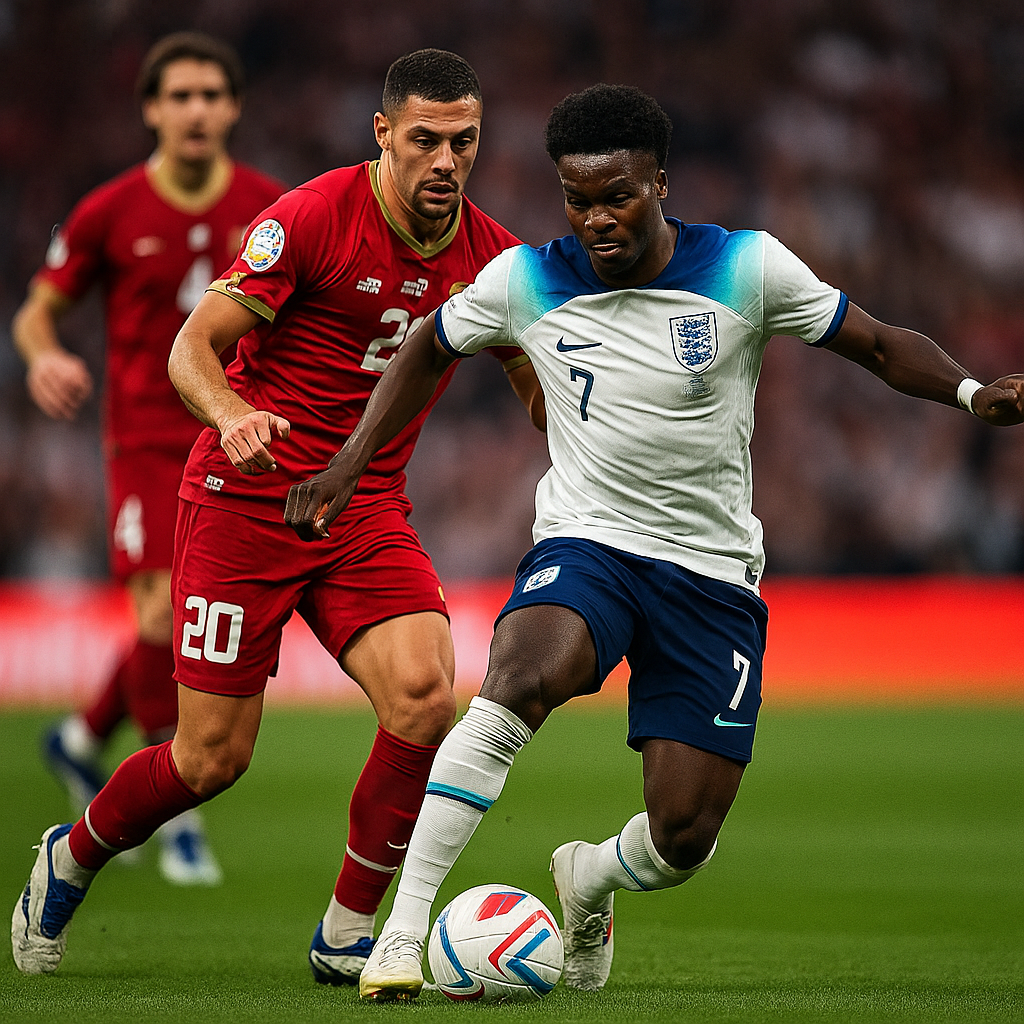DP World Tour support is the theme of the week—and the message is coming from the game’s most influential European voice. As the DP World Tour season reaches its crescendo at Jumeirah Golf Estates, Rory McIlroy has made a public appeal for Europe’s biggest names to “step up,” play the big weeks, and reinforce the tour’s identity in an era of fractured schedules, new formats, and shifting loyalties. His timing is deliberate: the season-ending DP World Tour Championship doubles as the final chapter of the Race to Dubai, with the Harry Vardon Trophy in reach once again for the Northern Irishman, and with challengers Marco Penge and Tyrrell Hatton still clinging to mathematical chances.
McIlroy’s stance is about more than a single trophy. It’s about safeguarding the DP World Tour’s heritage, amplifying its marquee stops, and ensuring that Europe’s professional circuit remains a thriving, world-class stage—all while men’s golf navigates the knock-on effects of the LIV disruption, the changing entry pathways to majors, and a calendar that asks even the biggest stars to make difficult choices. As the week begins, the question isn’t just who will lift the trophy in Dubai. It’s whether this moment can mark a reset—one where Europe’s headline acts recommit to the tour that shaped them, the fans that followed them, and the legacy that still matters.

McIlroy’s message: protect the tour, elevate the big events
McIlroy’s appeal is rooted in two truths: the DP World Tour has a “wonderful heritage,” and the current men’s landscape is undeniably fractured. In his telling, that’s precisely why the largest names—himself included—must treat the tour’s premier weeks as obligations rather than options. It’s a frank admission of responsibility: the more the stars appear, the stronger the fields; the stronger the fields, the healthier the product; and the healthier the product, the better the Tour can invest in venues, broadcast value, pathways, and prize funds. The immediate context is Dubai, but the subtext is the entire European schedule—Rolex Series events, national opens with deep histories, and new strategic stops designed to connect Europe with global markets.
And McIlroy’s voice carries particular weight right now. In April 2025 he finally slipped into a green jacket, completing the career Grand Slam and reminding everyone how his best golf can bend a season to his will. That Masters breakthrough didn’t just rewrite his personal narrative; it boosted his Tour-wide influence at a time when leadership from players is as valuable as low scores. PGA Tour+1
Race to Dubai: the stakes, the math, and the challengers
The Race to Dubai standings set the sporting stakes. McIlroy arrives in Dubai with the inside line on another season-long crown. Marco Penge—Europe’s breakout winner this season—and Tyrrell Hatton—battle-tested, fiery, and proven in big moments—represent the only viable threats. The permutations? Simple enough to make headlines, complex enough to stoke debate. If McIlroy finishes inside the top two at the DP World Tour Championship, no one can pass him. Penge’s route to glory involves either winning outright (and getting help from a McIlroy finish outside runner-up) or sharing second and relying on McIlroy slipping outside the top eight; Hatton’s window is even narrower, requiring a win with both Penge and McIlroy finishing below key thresholds.
Those scenarios capture the momentum of a long season—and underscore why the finale matters. Official previews confirm the top of the table: McIlroy leading, Penge and Hatton chasing, with points and tournament counts reflecting different routes to contention (majors count, consistency matters, and the finale carries heavyweight points). Sky Sports+1
Field notes: big names present—and notable absences
The DP World Tour Championship field always sparks conversation, and this year is no exception. Europe’s Ryder Cup core is heavily represented, a crucial signal in support of membership obligations and the Tour’s flagship week. Yet two absences jump out to any fan scanning the entry list: Jon Rahm, now a LIV major-winner-in-waiting who remains one of the planet’s most watched players, and Viktor Hovland, the Norwegian star whose decision to sit out is as newsworthy as any leaderboard story. Recent reports confirm both are out of Dubai—Rahm on his own competitive schedule and Hovland opting not to play the finale despite being eligible. Their names, missing from a 50-man showcase on the Earth Course, are reminders that even in a “must-play” climate, stars have choices. bunkered.co.uk+2Golfmagic+2
One European teammate has a different kind of absence—and the Tour has shown heart. Sepp Straka, granted special dispensation after the premature birth of his son, stepped away from the final playoff events to prioritize family and neonatal care. The DP World Tour reduced his minimum event requirement for the season, preserving his membership and acknowledging exceptional circumstances. It’s a compassionate decision in a hard-edged sports economy—and one that earned widespread approval. ESPN.com+2Sky Sports+2

The LIV factor: a 72-hole pivot with Tour-wide implications
No analysis of DP World Tour support in 2025 can ignore the LIV pivot. In early November, LIV announced a shift to 72-hole tournaments beginning in 2026—an unmistakable bid to align with traditional competitive norms and strengthen its case for world-ranking recognition. Regardless of one’s view of team formats or shotgun starts, the extra 18 holes point to a league chasing legitimacy in the eyes of ranking gatekeepers and major-championship entry committees. McIlroy himself called the move “peculiar,” yet the broader takeaway is that the competitive marketplace is still in flux. For the DP World Tour, that fluidity is both threat and opportunity: a threat if star weeks fragment further, an opportunity if Europe doubles down on identity, heritage, and a clear pathway to the very biggest stages. Reuters+2Golf Monthly+2
Why McIlroy’s appeal resonates now
McIlroy’s history with the European (now DP World) Tour runs deep—multiple Order of Merit titles, career-defining runs in the Rolex Series, and a record that now stands shoulder-to-shoulder with legends. With his seventh Race to Dubai title within reach, he would move to within one of Colin Montgomerie’s all-time mark; it’s impossible to discuss season-long excellence in Europe without uttering “Monty,” who strung together seven consecutive titles from 1993 to 1999 and added an eighth in 2005. McIlroy, never shy about context, has often praised that sustained dominance and the quality of competition Montgomerie faced—Faldo, Lyle, Langer, Woosnam—during a golden era for European golf. The point isn’t to compare eras; it’s to respect the mantle. Today’s stars, McIlroy argues, can honor that mantle by showing up when the Tour needs them most.
And today’s fans notice. The difference between a strong field and a stacked one is energy you can feel through the screen. Rolex Series weeks, national opens with century-long roots, the DP World Tour Championship itself—these feel different when the headliners anchor the tee sheet. That’s the spine of McIlroy’s message: the Tour’s identity is not a given; it’s a choice collectively made by its best players.
The shape of a modern DP World Tour: identity, pathways, and purpose
What does DP World Tour support look like in practical terms? Start with calendar commitments. Members who balance dual status—PGA Tour schedules, majors, and select global events—can still target Europe’s anchor weeks. Four, five, six European starts spread across the year create visibility and narrative threads that pull fans through the season. The Rolex Series remains a centerpiece, but the health of the whole schedule matters: national titles in Ireland, Scotland, Spain, Germany, and beyond; new venues that open fresh markets; and strategic co-sanctioned events that build bridges rather than silos.
Second, competitive pathways. The DP World Tour has leaned into global development—alliances that connect the Challenge Tour, opportunities that graduate talent to the PGA Tour, and a Race to Dubai that intertwines with majors. When Europe’s top names actively participate, it elevates those pathways: rookies share practice rounds with Ryder Cup heroes; proven winners chase points against full-strength fields; and the broadcast narrative becomes less about who isn’t there and more about rivalries we’re lucky to have.
Third, story integrity. Fans crave continuity—arcs that begin in the Middle East swing, surge through Europe’s summer, and resolve under Dubai’s late-autumn light. The Tour’s most bankable currency is not any single purse figure; it’s the promise that the story you start in February will pay off in November with the protagonists you recognize.
Dubai, the Earth Course, and the weight of the moment
The Earth Course at Jumeirah Golf Estates is more than a venue; it’s an annual test where the season’s themes collide. Fairways that reward driving, par-5s that tempt eagle roars, and finishing stretches that can flip a Race to Dubai script in a heartbeat—it’s the perfect canvas for a finale about identity and excellence. The field is elite, the stakes are layered, and the math is merciless. McIlroy’s job is straightforward: play his way to the top two and slam the door. Penge’s job is tougher: play your best week of the year and hope the leader blinks. Hatton’s task is toughest of all: win and trust the dominoes to fall. The standings, entry lists, and official previews spell out those windows—and they’re narrow enough to keep every shot meaningful. Sky Sports+1
Marco Penge: the under-the-radar engine of 2025
Every great season needs a surprise. In 2025 Europe’s surprise package has been Marco Penge, whose step-change from promising ball-striker to multi-time winner transformed the standings and injected new energy into leaderboards from spring to autumn. The Tour itself has highlighted his rise—three wins, a career-high ranking, and a presence that feels more inevitable by the month. Penge’s candidacy for European No. 1 is the validation of a year when he turned potential into points. It also underscores the DP World Tour’s value proposition: this is a circuit where, with talent and nerve, a player can sprint from the pack and go blow-for-blow with the most decorated names in the game. DP World Tour
Tyrrell Hatton: the proven closer with a puncher’s chance
Hatton doesn’t need an introduction to European fans. He’s won big titles on both sides of the Atlantic and thrives when the moment gets loud. In Dubai, his equation is brutal—he likely needs to win and still receive help. But if anyone can shoot a Sunday number that scrambles a spreadsheet, it’s Hatton. His broader significance to DP World Tour support is straightforward: he’s a star who moves the needle, and every start he makes in Europe raises the Tour’s profile domestically and internationally. The Race to Dubai math may be against him; the competitive drama is not.
The absences revisited: how much do they matter?
It’s fair to ask how much Rahm and Hovland sitting out changes the week. The short answer is: less than you think, more than you feel. The 50-man finale is absurdly strong even without them, and the storylines—McIlroy’s chase, Penge’s surge, Hatton’s hope—stand on their own. But fields are about feel as much as numbers, and the absence of two global top-tier performers is a reminder of the still-fragmented calendar. As LIV tweaks formats and scheduling, as the PGA Tour’s signature events evolve, as Europe plots its marquee runs, the challenge is connecting the dots. One solution is exactly what McIlroy proposes: Europe’s stars circling key DP World Tour weeks in ink, not pencil. Dubai is one of those weeks. So are Wentworth, the Scottish Open, and a handful of national opens that turn cities into amphitheaters. bunkered.co.uk+1
The Ryder Cup afterglow—and why it matters
Europe’s historic away victory at Bethpage Black still hums in the background of this season’s finale. That triumph did more than reclaim a trophy; it re-energized the European core and reminded the sporting world that Europe’s best can thrive in the most hostile environments. Many of those heroes are in Dubai this week, and their presence threads the needle from team success to individual responsibility. The Tour feeds the Ryder Cup; the Ryder Cup feeds the Tour. When the same stars power both, the ecosystem is healthy. That’s another reason DP World Tour support isn’t a slogan; it’s strategy. Wikipedia
LIV’s 72-hole shift, ranking points, and Europe’s competitive advantage
If LIV’s 72-hole change in 2026 persuades the Official World Golf Ranking to revisit points (still not guaranteed), that will influence how non-PGA-Tour players plot their schedules, how majors seed fields, and how Europe positions its events against a more traditional-looking rival. But Europe holds an ace: history and geography. Fans don’t just watch trophies get handed out; they watch them handed out in places they love—Wentworth’s parkland theater, the Scottish coastlines, iconic national opens with stories that stretch decades. By ensuring its biggest names show up where the history is loudest, the DP World Tour keeps its advantage even as competitors attempt to look and feel more like the orthodox version of tour golf. Reuters+1
What “stepping up” can look like in 2026—five practical commitments
- Circle the anchors. If you’re a European star with dual membership, pick your five European locks for the year: Wentworth, a national open, one Middle East swing event, the Scottish Open, and the DP World Tour Championship. That’s a skeleton key for narrative cohesion.
- Build fan rituals. Announce European starts early—give supporters time to travel and create repeatable annual traditions. The more predictable the calendar, the louder the crowds.
- Mentor weeks. Pair emerging talents with veterans in practice rounds and pro-ams. When rookies share a tee with Ryder Cup stalwarts, the Tour’s present and future share oxygen.
- Storytelling transparency. Embrace the microphone. Explain why you’re here this week beyond points and prize money—talk about history, local communities, and the Tour’s role in your career.
- Charter collaboration. Work with the Tour and tournament directors on scheduling, appearance programs, and community engagements that make star participation a win-win, not a zero-sum choice.
McIlroy’s personal calculus: majors, FedExCups, and Race to Dubai
There was a period where McIlroy’s focus tilted toward the PGA Tour’s FedExCup chase, and the gap between Race to Dubai wins reflected that. Post-pandemic, with a 10-to-15-year horizon in mind, he recalibrated—putting tangible emphasis back on Europe’s season-long prize. The results: a run of top finishes in majors (whose points count on both sides) and a steady hand in the DP World Tour events he does play. This dual-track approach—dominate where the world is watching, show up where Europe is building—forms the blueprint for stars who want to have it both ways: legacy and loyalty.

The heritage point: Montgomerie, Seve, and the undervalued narrative
When McIlroy talks up Montgomerie’s consecutive Order of Merit streak, he’s reminding fans (and fellow players) that season-long excellence is a unique kind of greatness—less about one white-hot week, more about a year of relentless competence. Tie that to Seve’s charisma, Faldo’s precision, Langer’s machine-like consistency, and Woosnam’s fire, and you get the DNA of European golf. That heritage is a living asset—but only if today’s stars keep feeding it. DP World Tour support isn’t backward-looking nostalgia; it’s a forward-facing investment in what makes European golf distinct.
What to watch in Dubai: five swing moments that decide the trophy
- Opening-round positioning: If McIlroy posts something in the mid-60s, the pressure shifts immediately to Penge and Hatton, who need to transform “possible” into “probable.”
- Par-5 scoring: Earth Course par-5s are green lights—whoever averages under par by the widest margin tends to own the weekend.
- Saturday patience: A gusty second or third round turns targets into traps. Minimizing bogeys on the stretch is everything.
- Sunday surge: The 16-18 closing run can flip standings in two holes; a birdie-birdie finish has wrecked more calculators than any press room wants to admit.
- The head-to-head moment: If McIlroy gets paired with either chaser late on Sunday, a single tee shot can decide both the tournament and the season.
If McIlroy seals it: the legacy ledger
Should McIlroy close out another Race to Dubai, he edges one step closer to Montgomerie’s all-time mark while extending a streak of European dominance in an era when competition for dates, eyeballs, and status has never been fiercer. Add the Augusta breakthrough in April 2025, and this season becomes less about numbers and more about narrative: a generational player who completed his Grand Slam and then doubled down on the tour that raised him. That’s what leadership looks like in golf: win big, speak up, and show up. PGA Tour+1
If a chaser shocks Dubai: why that’s healthy, too
A Penge or Hatton surge would be equally valuable to Europe’s story. It proves the ladder is real, that new winners can climb to season-long crowns, and that the European circuit isn’t a closed shop. For fans, a “what just happened?” Sunday would be pure theater. For the Tour, it’s further evidence that its competitive product stands on merit, not just star power. And for McIlroy’s message, it changes nothing: the call for DP World Tour support is as relevant when the favorite wins as when a challenger breaks through.
The bottom line
The DP World Tour’s best future is built by its biggest voices. McIlroy’s rallying cry isn’t about nostalgia; it’s about momentum. Europe’s calendar offers history, drama, and a global footprint that can thrive in any era—if the stars circle the right weeks, if the fans know when to show up, and if the Tour doubles down on its identity. Dubai is a perfect stage to prove it.

Quick Facts & Verified Context
- McIlroy completed the career Grand Slam at the 2025 Masters (playoff win over Justin Rose). PGA Tour+1
- LIV Golf will switch to 72-hole events from 2026, a significant format change with OWGR implications. Reuters+1
- Race to Dubai contenders and finale framing: McIlroy leads; Penge and Hatton retain mathematical chances entering Dubai. Sky Sports+1
- Viktor Hovland and Jon Rahm are notable absentees from the DP World Tour Championship field. bunkered.co.uk+2Golfmagic+2
- Sepp Straka was granted dispensation amid the premature birth and care of his newborn son, easing membership requirements. ESPN.com+2Sky Sports+2
External Sources (for reference)
- Reuters: LIV Golf expanding to 72 holes from 2026. Reuters
- Golf Monthly: LIV League moves to 72-hole format. Golf Monthly
- Sky Sports: DP World Tour Championship—field, format, who can stop McIlroy. Sky Sports
- European Tour (official): Race to Dubai rankings overview. DP World Tour
- European Tour (official): DP World Tour Championship 2025—event hub. DP World Tour
- PGA TOUR: McIlroy wins 2025 Masters, completes Grand Slam. PGA Tour
- PEOPLE: Tiger Woods reacts to McIlroy’s Grand Slam. People.com
- bunkered: Notables missing from the DP World Tour Championship. bunkered.co.uk
- GolfMagic: Hovland withdraws from DP World Tour finale; Race to Dubai scenarios. Golfmagic+1
- Golf Digest / ESPN / Sky Sports: Sepp Straka’s dispensation and withdrawal details. Golf Digest+2ESPN.com+2


